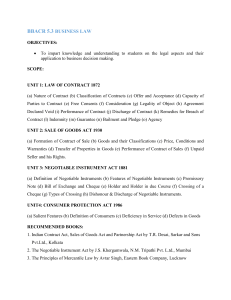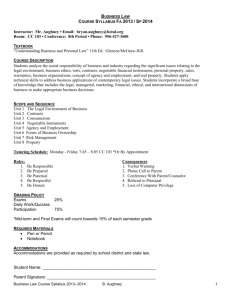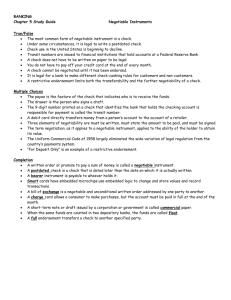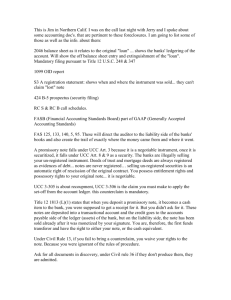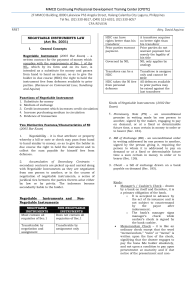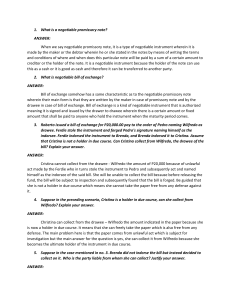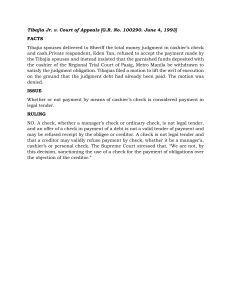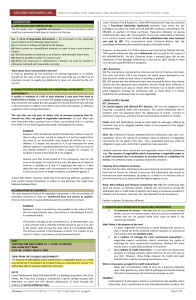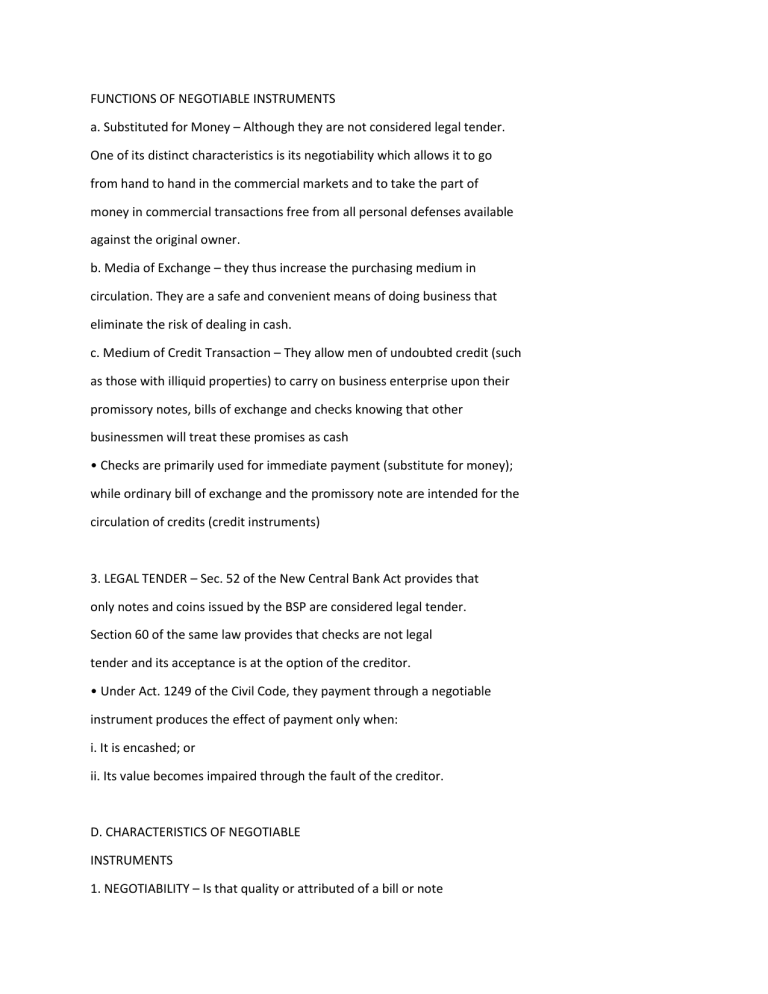
FUNCTIONS OF NEGOTIABLE INSTRUMENTS a. Substituted for Money – Although they are not considered legal tender. One of its distinct characteristics is its negotiability which allows it to go from hand to hand in the commercial markets and to take the part of money in commercial transactions free from all personal defenses available against the original owner. b. Media of Exchange – they thus increase the purchasing medium in circulation. They are a safe and convenient means of doing business that eliminate the risk of dealing in cash. c. Medium of Credit Transaction – They allow men of undoubted credit (such as those with illiquid properties) to carry on business enterprise upon their promissory notes, bills of exchange and checks knowing that other businessmen will treat these promises as cash • Checks are primarily used for immediate payment (substitute for money); while ordinary bill of exchange and the promissory note are intended for the circulation of credits (credit instruments) 3. LEGAL TENDER – Sec. 52 of the New Central Bank Act provides that only notes and coins issued by the BSP are considered legal tender. Section 60 of the same law provides that checks are not legal tender and its acceptance is at the option of the creditor. • Under Act. 1249 of the Civil Code, they payment through a negotiable instrument produces the effect of payment only when: i. It is encashed; or ii. Its value becomes impaired through the fault of the creditor. D. CHARACTERISTICS OF NEGOTIABLE INSTRUMENTS 1. NEGOTIABILITY – Is that quality or attributed of a bill or note whereby it may pass from one person to another similar to money, so as to give the holder in due course the right to collect on the instrument the sum payable for himself free from any defect in the title of any of the prior parties or defenses available to them among themselves. 2. ACCUMULATION OF SECONDARY CONTRACTS – As they are transferred from one person to another. Once an instrument is issued, additional parties can become involved. E. INCIDENTS IN THE LIFE OF NEGOTIABLE INSTRUMENTS PROMISSORY NOTE BILL OF EXCHANGE PREPARATION & SIGNING ISSUANCE NEGOTIATION PRESENTMENT FOR ACCEPTANCE ACCEPTANCE DISHONORY BY NON-ACCEPTANCE PRESENTMENT FOR PAYMENT DISHONOR BY NON-PAYMENT PAYMENT DISCHARGE F. KINDS OF NEGOTIABLE INSTRUMENTS 1. PROMISSORY NOTES (SEC. 184, NIL) – An unconditional promise in writing mace by one person to another, signed by the maker, engaging to pay on demand, or at a fixed or determinable future time, a sum certain in money to order or to bearer. a. Parties to a Negotiable Promissory Note are (1) Maker and (2) Payee; b. Kinds of Negotiable Promissory Note include certigicates of deposits, bank notes, due bills and bonds
